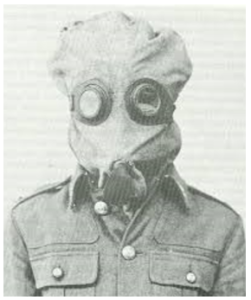Saturday, May 22, 1915
Festubert (Indian Village)
The Battalion War Diarist wrote for this day: “Relieved by 4th Battn. about 9 p.m. and marched to billets in Le Hamel on Rue du Bois between Le Touret and Bethune, arriving 11 p.m. See attached report of operations May 18-22nd 1915.” [1]
THIS DAY IN RMR HISTORY: The Battalion history adds simply: “…here four uneventful days were passed.” [2]
 “Private Drake, of the Royal Montreal Regiment, was the first of the Canadian soldiers to win the Distinguished Conduct Medal with the First Canadian Expeditionary Force. A letter has been received by Mrs. Paul R. Hanson from Major Hanson, of the R.M.R., which shows that Pte. Drake fairly won his distinction, which is only second to the Victoria Cross. At the same time Major Hanson’s letter shows that many other Canadians have performed deeds of gallantry which in any ordinary war would earn the highest honours.
“Private Drake, of the Royal Montreal Regiment, was the first of the Canadian soldiers to win the Distinguished Conduct Medal with the First Canadian Expeditionary Force. A letter has been received by Mrs. Paul R. Hanson from Major Hanson, of the R.M.R., which shows that Pte. Drake fairly won his distinction, which is only second to the Victoria Cross. At the same time Major Hanson’s letter shows that many other Canadians have performed deeds of gallantry which in any ordinary war would earn the highest honours.
Private Drake was recommended for the D.C.M. by Major Hanson, and has been granted the medal. Since then Major Hanson himself has been wounded, a German bullet striking him in the hip and severing the sciatic nerve, which caused intense suffering. He was operated on at a field hospital in France, when the severed ends of the nerves were joined, and a week or so ago he was moved to a private house at Roland Gardens, London, which has been given as a hospital, where Major Hanson is a bed neighbour of Capt. McCombe, of the same Battalion, who is also recovering from wounds. It is expected that Major Hanson will return to his home at St. Lambert in about a month, but it may be a year before he recovers the use of his leg.
Major Hanson, in his letter to Mrs. Hanson, merely dates his writing from ‘The Trenches, France,’ this being before the Canadians went forward to Belgium. He says, in part:
‘We thought we were in for training in England, but this is the real thing. We came out of the trenches yesterday, and I had three men shot within five seconds. Private Loady (sic) was shot first, and I saw him drop. Stretcher-Bearer Drake ran out, and he was shot. He rolled over, and then got up, and still under fire, ran out to Loady and gave him first aid treatment. This was during the fighting at Neuve Chapelle.
Private Gould then ran out and helped both of them, and he was also shot. We got him back, and Teddy Russell helped carry Loady in, but poor chap, he never got back to our headquarters.’
In this letter Major Hanson said he was going to recommend Stretcher Bearer Drake for the Distinguished Conduct Medal, which he did before he himself was wounded, and the cable reports since then show that his recommendation has been acted upon.” [4]

RESPIRATORS WANTED BY TROOPS AT FRONT: “Due to the use of poison gas by the German hordes, the great need of our boys at the front now are respirators, as a protection against the asphyxiating gases. The following types of respirators can easily be made in the household, and it is needless to say that they will be warmly welcomed by the boys who are now battling for us against tyranny and oppression.-
- A face piece (to cover mouth and nostrils) formed of an oblong pad of bleached absorbent cotton wool, about 5 ½ inches by 3 ¾ inches, covered with three layers of bleached cotton gauze and fitted with a band around the head to keep the pad in position, consisting of a piece of half-inch cotton elastic 16 inches long, attached to the narrow end of the face pad so as to form a loop with the pad.
- A piece of double stockinette 9 ½ inches long, 3 ½ inches wide in the centre, gradually diminishing in width to 2 ½ inches at each end, a piece of thick plaited worsted about 5 inches long attached at each end so as to form a loop to pass over the ear.” [5]
Note: At this time during the battle [April 1915] “each man in the 8th Battalion’s trenches was issued with a makeshift respirator – a cotton bandolier to be wetted and tied over his nose and mouth if a gas cloud approached. Manufactured respirators came later. The smoke helmet, an impregnated bag to fit over the head, was introduced in June [1915]. The small box respirator was issued in August 1916 and remained in use until the end of the war.” [6]
[1] War Diary, 14th Canadian Battalion, The Royal Montreal Regiment, May 22, 1915. Library and Archives Canada, Ottawa, http://data2.collectionscanada.ca/e/e044/e001089733.jpg
[2] R.C. Featherstonhaugh, The Royal Montreal Regiment 14th Battalion C.E.F. 1914-1925, Montreal, The Gazette Printing Co., Ltd., 1927, pg. 58.
[3] “Three Men Shot Within 5 Seconds,” The Gazette, Montreal, Quebec, Saturday, May 22, 1915, pg. 5, col. 1.
[4] Ibid.
[5] “Respirators Wanted by Troops at the Front,” Quebec Telegraph, Quebec, Thursday, May 20, 1916, pg. 4, col. 5.
[6] Col. G.W.L. Nicholson, CD., Official History of the Canadian Army in the First World War: Canadian Expeditionary Force 1914-1919, Duhamel, Queens Printer, Ottawa, 1962, pg. 71.

